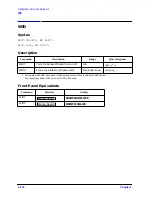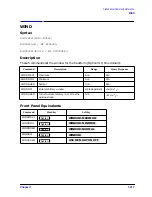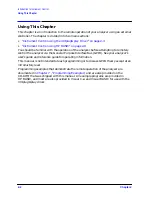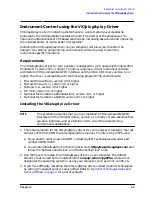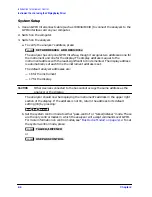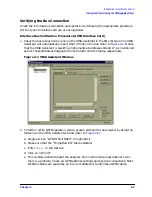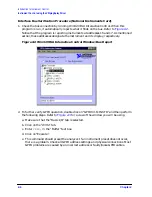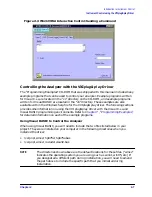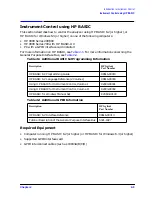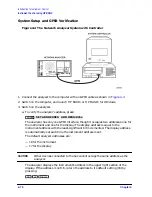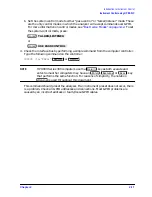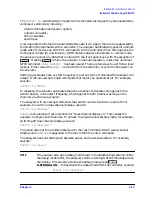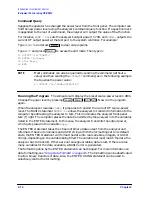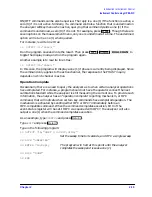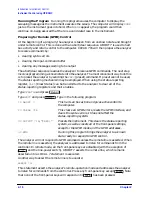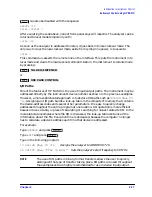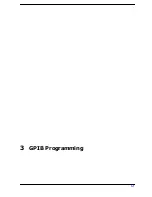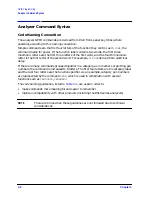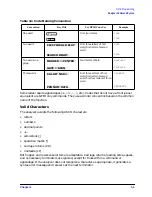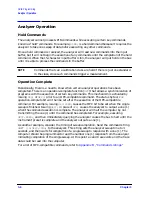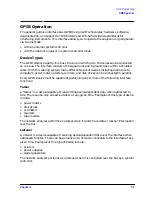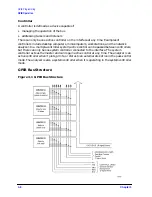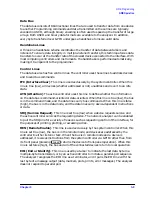
2-12
Chapter 2
Introduction to Instrument Control
Instrument Control using HP BASIC
Sending Commands
A remote controller can manipulate the functions of the analyzer by sending commands to
the analyzer via the General Purpose Interface Bus (GPIB). The commands used are
specific to the analyzer. Remote commands executed over the bus take precedence over
manual commands executed from the instrument's front panel. Remote commands are
executed as soon as they are received by the analyzer. A command only applies to the
active channel (except in cases where functions are coupled between channels). Most
commands are equivalent to front-panel hardkeys and softkeys.
Command Structure in BASIC
Consider the following BASIC command for setting the analyzer's start frequency to
50 MHz:
OUTPUT 716;”STAR 50 MHZ;”
The command structure in BASIC has several different elements:
the BASIC command statement
OUTPUT
- The BASIC data-output statement.
the appendage
716
- The data is directed to interface 7 (GPIB), and
on to the device at address 16 (the analyzer). This
appendage is terminated with a semicolon. The next
appendage is
STAR
, the instrument mnemonic for
setting the analyzer's start frequency.
data
50
- a single operand used by the root mnemonic
STAR
to set the value.
unit
MHZ
- the units that the operand is expressed in.
terminator
;
- indicates the end of a command, enters the data,
and deactivates the active-entry area.
The
“STAR 50 MHZ;”
command performs the same function as pressing the following keys
on the analyzer's front panel:
STAR
is the root mnemonic for the start key, 50 is the data, and
MHZ
are the units. Where
possible, the analyzer's root mnemonics are derived from the equivalent key label.
Otherwise they are derived from the common name for the function.
“Alphabetical Command Reference,”
lists all the root mnemonics and all the different units
accepted.
The semicolon (
;
) following
MHZ
terminates the command within the analyzer. It removes
start frequency from the active-entry area, and prepares the analyzer for the next
command. If there is a syntax error in a command, the analyzer will ignore the command
and look for the next terminator. When it finds the next terminator, it starts processing
incoming commands normally. Characters between the syntax error and the next
terminator are lost. A line feed also acts as a terminator. The BASIC
OUTPUT
statement
transmits a carriage return/line feed following the data. This can be suppressed by putting
a semicolon at the end of the statement.
Start
50
M/
µ
Summary of Contents for 8719ES
Page 15: ...1 1 1 Alphabetical Command Reference ...
Page 293: ...2 1 2 Introduction to Instrument Control ...
Page 310: ...3 1 3 GPIB Programming ...
Page 334: ...4 1 4 Reading Analyzer Data ...
Page 343: ...5 1 5 Data Processing Chain ...
Page 350: ...6 1 6 Error Reporting ...
Page 364: ...7 1 7 Programming Examples ...
Page 502: ...A 1 A Preset Conditions ...
Page 517: ...B 1 B Command Listings ...

